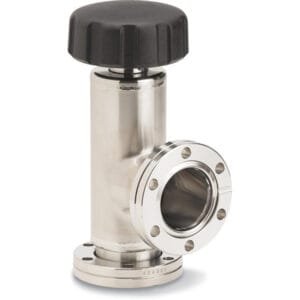Premium ISO-K HV Reducing Nipples (Clamped) from TFM: Versatile Solutions for High Vacuum Systems
When it comes to creating a secure and reliable vacuum seal in high vacuum (HV) systems, the ISO-K HV Reducing Nipples (Clamped) from TFM provide an essential solution for connecting components of different sizes without compromising the system’s integrity. Whether you’re working on semiconductor processing, laboratory research, or industrial applications, these reducing nipples are designed to meet the stringent demands of high-performance vacuum systems.
What Are ISO-K HV Reducing Nipples (Clamped)?
ISO-K HV Reducing Nipples are essential components in vacuum systems, specifically engineered to provide seamless connections between different sizes of vacuum flanges. These nipples are designed according to the ISO-K standard and feature a clamped connection for easy installation and a reliable, leak-tight seal. The clamped design ensures that components are securely connected without the need for additional welding or complex installation procedures, making them a highly convenient choice for high vacuum systems.
Key Features of ISO-K HV Reducing Nipples (Clamped)
Clamped Connection: Featuring a clamped interface, these reducing nipples provide an easy and quick installation process, ideal for systems that require frequent maintenance or adjustments.
High Vacuum Performance: The clamped design, when used with appropriate gaskets, provides a leak-tight seal even under the most demanding high vacuum conditions, ensuring a stable and clean vacuum environment.
Durable Construction: Manufactured from high-quality materials such as stainless steel, these reducing nipples offer long-lasting durability and resistance to corrosion and wear in vacuum systems.
Versatile Size Options: Available in various sizes to fit different ISO-K flanges, these reducing nipples enable seamless connections between components of different diameters, optimizing your vacuum system’s flexibility.
Precision Engineering: CNC-machined to precise tolerances, these reducing nipples ensure accurate fit and alignment, reducing the risk of leaks and improving overall system performance.
Applications of ISO-K HV Reducing Nipples (Clamped)
The ISO-K HV Reducing Nipples are commonly used in systems that require the integration of multiple components of varying sizes. Some key applications include:
Semiconductor Manufacturing: Ideal for creating stable, reliable vacuum systems in semiconductor fabrication and etching processes.
Vacuum Furnaces: Used to connect various sizes of flanges in high-temperature applications, where robust vacuum integrity is critical.
Research and Development: In laboratory settings, ISO-K HV reducing nipples provide the flexibility needed to adjust and optimize vacuum systems.
Thin Film Deposition Systems: Ensure precise connections between different sections of deposition systems, maintaining the integrity of thin film processes.
Industrial Vacuum Systems: Perfect for connecting different vacuum pumps, chambers, and valves in large-scale industrial systems.
Why Choose TFM for Your ISO-K HV Reducing Nipples?
TFM is a trusted supplier of premium vacuum components, and our ISO-K HV Reducing Nipples (Clamped) stand out for their:
Reliable Performance: Each reducing nipple is rigorously tested to ensure optimal performance under high vacuum conditions, providing peace of mind for your systems.
Durability and Strength: With high-quality materials and expert craftsmanship, TFM’s reducing nipples are built to withstand harsh environments and offer long-term reliability.
Fast and Efficient Delivery: We understand the importance of keeping your projects on track, which is why we offer fast shipping and reliable customer service.
Customizable Options: We offer customized solutions for unique vacuum system configurations, ensuring a perfect fit for your specific needs.
Get the ISO-K HV Reducing Nipples from TFM Today
If you’re looking for high-performance ISO-K HV Reducing Nipples (Clamped), TFM offers the perfect solution to enhance the flexibility and reliability of your vacuum systems. Whether you are upgrading existing systems or building a new setup, our reducing nipples are designed to provide seamless connections with superior sealing.
Contact TFM today to request more information, receive a quote, or place an order. Our expert team is ready to assist you with all your high vacuum needs.





Reviews
There are no reviews yet.